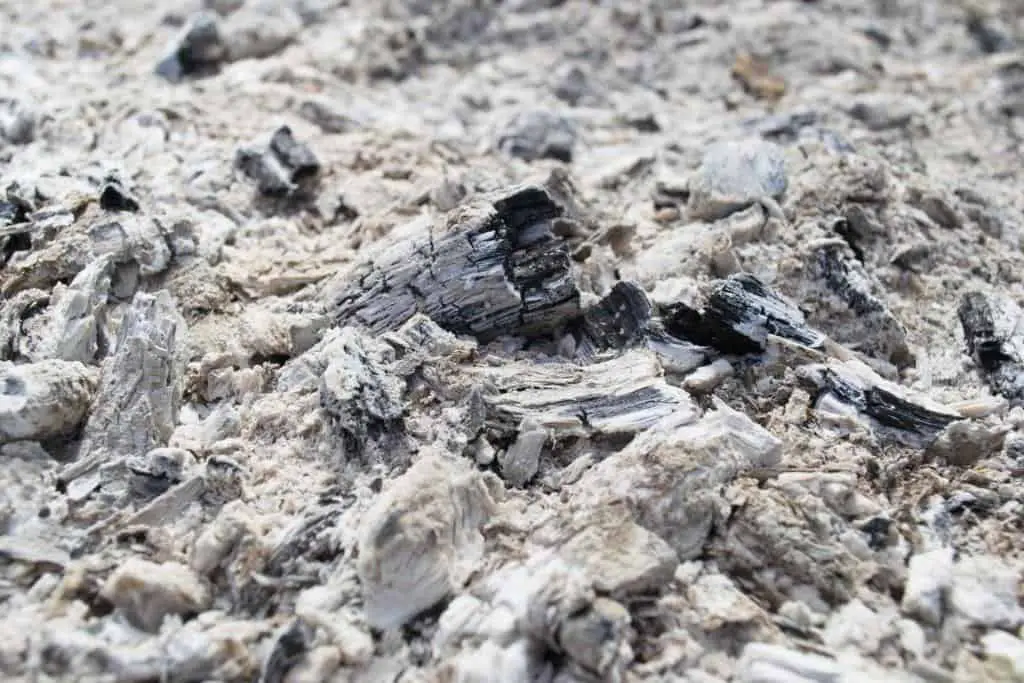Wood Ash Composition and Its Density: Alternative to Sustainable Raw Material

Wood ash is a byproduct of wood combustion that has been used for many years for various purposes, including as a fertilizer, liming agent, and as a raw material in the production of glass and soap.
Recently, wood ash has gained renewed interest as a sustainable raw material in many industries due to its unique properties and composition. Sustainability has become a crucial concern for many industries, and the quest for alternative raw materials is more pressing than ever. Wood ash, which is a byproduct of burning wood, has emerged as a promising alternative due to its unique properties and versatility.
In this article, we explore the composition and properties of wood ash, its production, applications, benefits, challenges, case studies, future prospects, and comparison with other sustainable raw materials.
Composition of Wood Ash
Wood ash is composed of a variety of minerals that were present in the wood before it was burned. The composition of wood ash can vary depending on the type of wood burned, the temperature at which it was burned, and the duration of the burn.
Typically, wood ash chemical formula is composed of calcium oxide (CaO), potassium oxide (K2O), magnesium oxide (MgO), and phosphorus pentoxide (P2O5). In addition, wood ash can also contain trace amounts of other minerals such as iron, zinc, copper, and manganese.
| Mineral | Percentage by weight |
| Calcium oxide | 20-30% |
| Potassium oxide | 10-15% |
| Magnesium oxide | 5-10% |
| Phosphorus pentoxide | 1-2% |
The composition of wood ash can vary depending on the type of wood burned. Hardwoods such as oak and maple tend to produce wood ash with a higher calcium and potassium content, while softwoods such as pine and spruce produce ash with a higher magnesium content.
Density of Wood Ash
The density of wood ash can vary depending on the type of wood burned, the temperature at which it was burned, and the duration of the burn. Typically, wood ash has a density of around 700–800 kg/m³. The amount of unburned wood and other organic material in the wood ash can affect its density.
| Type of Wood | Density (kg/m³) |
| Oak | 600-800 |
| Pine | 400-500 |
| Spruce | 300-400 |
The amount of moisture in wood ash can also affect the density of the ash. Wet wood ash will have a lower density than dry wood ash.
Production of Wood Ash
Wood ash is produced by burning wood in a furnace or stove. The type of wood used and the combustion conditions influence the quality and quantity of wood ash produced. For example, hardwoods such as oak and maple produce more ash than softwoods like pine and spruce. The temperature and duration of the combustion process also affect the composition of the ash.
After the wood is burned, the ash is collected and processed to remove impurities such as unburned wood, charcoal, and debris. The ash is then milled to a fine powder and stored for use. Wood ash production has some environmental impacts, such as air pollution and carbon emissions. However, compared to other raw materials, it has a lower carbon footprint and is a renewable resource.
Applications of Wood Ash
Wood ash has many potential uses as a sustainable raw material in various industries. Here are some examples:
1. Agriculture
Wood ash can be used as a fertilizer and liming agent in agriculture. The high calcium and potassium content of wood ash can help neutralize acidic soil and improve soil fertility. Wood ash can also be used to provide essential nutrients to plants, such as calcium and potassium. Wood ash has a pH of around 10, which helps to neutralize acidic soil and increase the availability of nutrients. It also improves soil structure and water retention capacity.
2. Construction
Wood ash can be used as a raw material in the production of concrete and other construction materials. The high calcium content of wood ash can help improve the strength and durability of concrete, while the high potassium content can improve its workability. Its low density and high insulating properties make it an ideal additive for lightweight concrete and plaster. It is also used in the production of ceramics and glazes, where it acts as a flux to lower the melting point and improve the consistency of the product.
3. Water Treatment
Wood ash can be used to remove impurities from water. The high pH of wood ash can help neutralize acidic water, while the high calcium and magnesium content can help remove heavy metals and other contaminants. It can also be used to remove phosphorus from wastewater, which is a major cause of eutrophication in aquatic ecosystems.
4. Soap Production
Wood ash can be used as a raw material in the production of soap. The potassium hydroxide present in wood ash can be used to create a lye solution, which is an essential ingredient in the production of soap.
Challenges of Using Wood Ash
Despite its many benefits, the use of wood ash also poses some challenges. The variability of its composition and impurities can make it difficult to use in certain applications. For example, high levels of heavy metals in wood ash may limit its use in agriculture or water treatment. In addition, the transportation and storage of wood ash can be challenging due to its fine texture and potential for dust formation.
Another challenge is the lack of standardization in the production and quality of wood ash. Different types of wood, combustion conditions, and processing methods can result in variations in the composition and quality of the ash. This can make it difficult for users to predict the performance of wood ash in their specific applications.
Comparison with Other Sustainable Raw Materials
Wood ash is not the only sustainable raw material available. Other options include bamboo, hemp, and recycled materials such as glass and plastic. Each of these materials has its own unique properties and advantages for different applications.
Compared to bamboo and hemp, wood ash has a lower cost of production and is readily available in many regions. It is also a byproduct of a renewable resource, which reduces its environmental impact. However, bamboo and hemp have faster growth rates and are more versatile in their applications, such as textiles and construction.
Compared to recycled materials, wood ash is a renewable resource that does not require energy-intensive recycling processes. It is also biodegradable and can be used in applications that require natural materials. However, recycled materials have the advantage of reducing waste and conserving resources.
Conclusion
Wood ash is a promising alternative to traditional raw materials due to its unique properties and versatility. Its high alkalinity and micronutrient content make it an ideal soil conditioner and fertilizer for agriculture. It is also used in construction, ceramics, and water treatment, among other applications. The use of wood ash has several environmental, economic, and social benefits, but also poses some challenges related to its variability and quality. The future of wood ash as a sustainable raw material depends on the development of standards and regulations and research on its potential risks and benefits. Compared to other sustainable raw materials, wood ash has its






